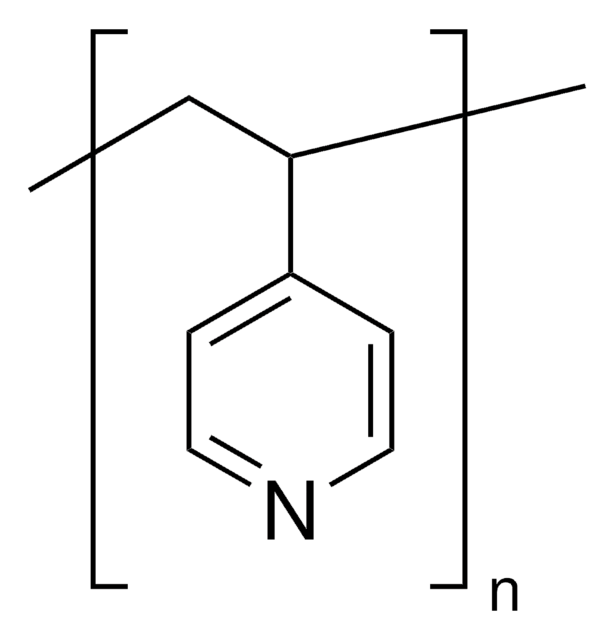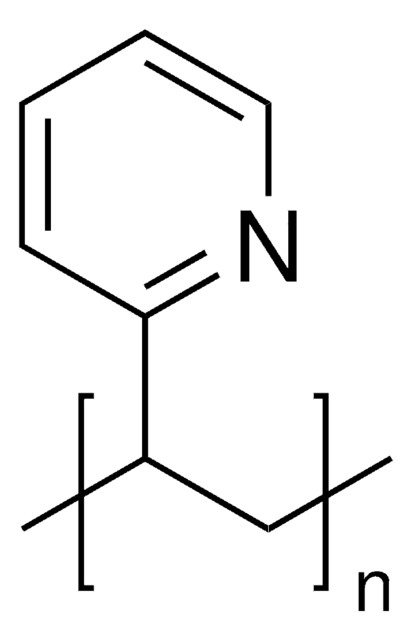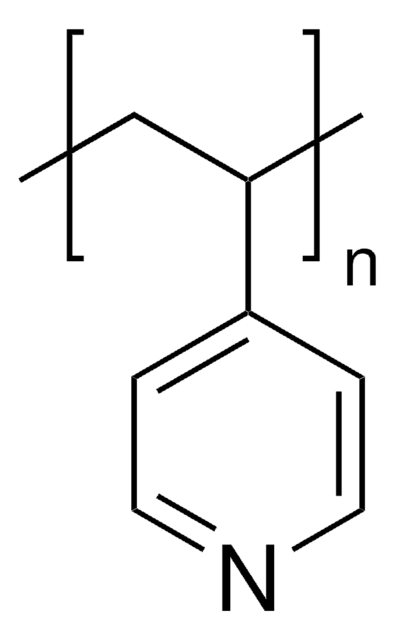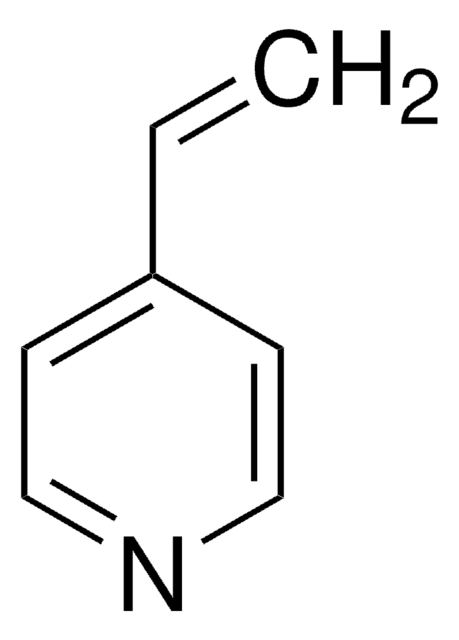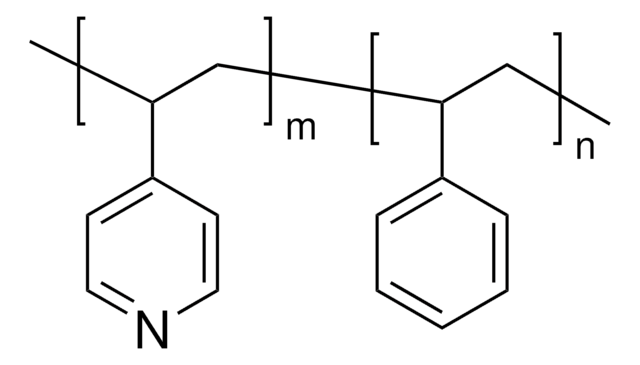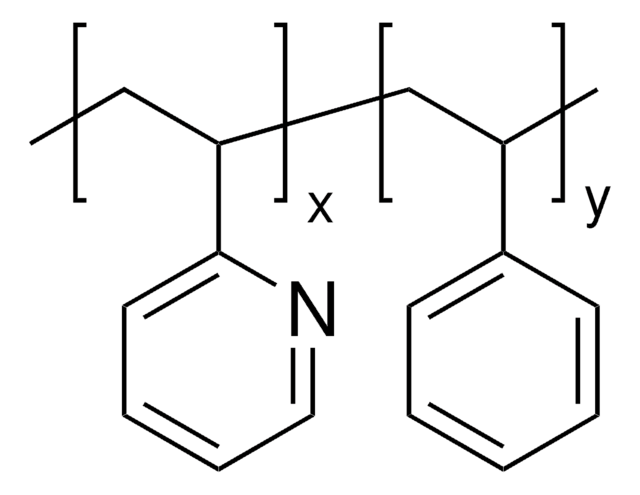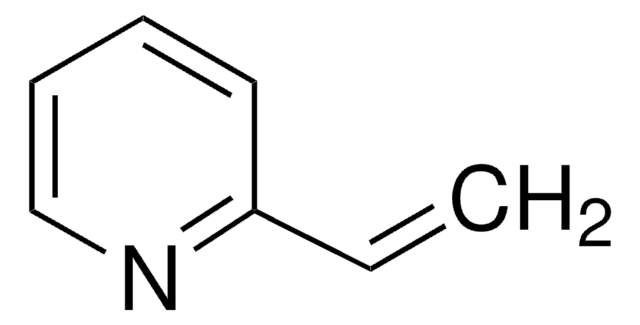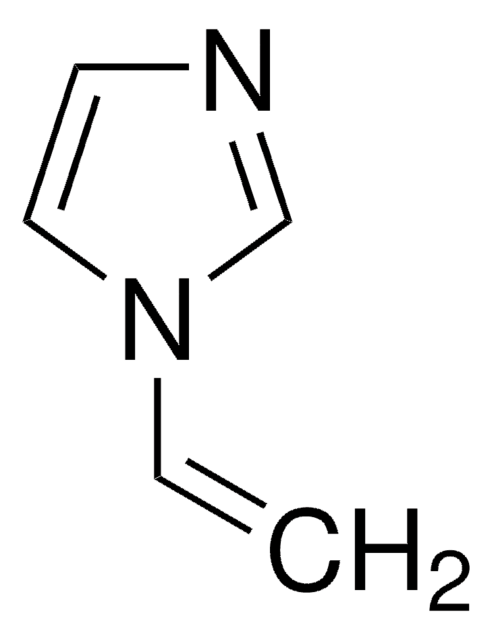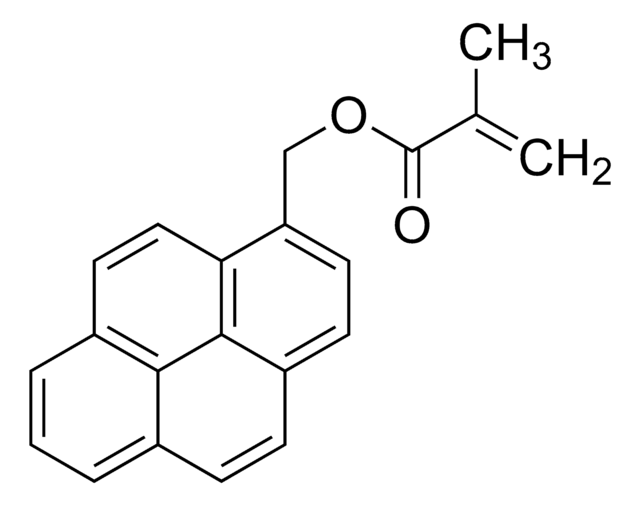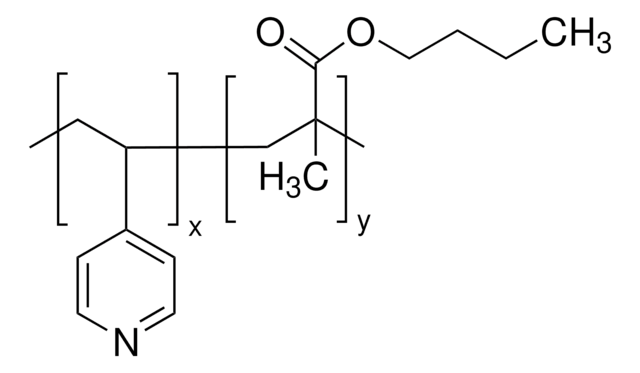523321
Poly(2-vinylpyridine)
analytical standard, average Mw 37,500 (Typical), average Mn 35,000 (Typical)
Sign Into View Organizational & Contract Pricing
All Photos(1)
About This Item
Recommended Products
grade
analytical standard
Quality Level
mol wt
average Mn 35,000 (Typical)
average Mw 37,500 (Typical)
technique(s)
gel permeation chromatography (GPC): suitable
format
neat
InChI
1S/C7H7N/c1-2-7-5-3-4-6-8-7/h2-6H,1H2
InChI key
KGIGUEBEKRSTEW-UHFFFAOYSA-N
Looking for similar products? Visit Product Comparison Guide
Application
- Synthesis and Structural Insight into Poly(dimethylsiloxane)-b-Poly(2-vinylpyridine) Copolymers: This study delves into the synthesis of poly(dimethylsiloxane)-b-poly(2-vinylpyridine) copolymers, highlighting their structural characteristics and potential applications in creating hybrid materials with unique properties (Avgeropoulos et al., 2023).
- pH Tunable Patterning of Quantum Dots: Research discusses the utilization of poly(2-vinylpyridine) in pH-sensitive patterning for quantum dot arrays, offering a versatile approach for developing advanced photonic devices (Onses et al., 2024).
- Dynamic Photonic Janus Colloids with Axially Stacked Structural Layers: The study presents the application of poly(2-vinylpyridine) in the formation of dynamic photonic Janus colloids, which could lead to innovative solutions in sensor technologies and display systems (Ku et al., 2024).
- Polyhedral Colloidal Clusters Assembled from Amphiphilic Nanoparticles in Deformable Droplets: Demonstrates the role of poly(2-vinylpyridine) in assembling complex colloidal structures, which may be crucial for the development of novel biomaterials and drug delivery systems (Jiang et al., 2023).
signalword
Warning
hcodes
Hazard Classifications
Eye Irrit. 2 - Skin Irrit. 2 - STOT SE 3
target_organs
Respiratory system
Storage Class
11 - Combustible Solids
wgk_germany
WGK 3
flash_point_f
Not applicable
flash_point_c
Not applicable
ppe
dust mask type N95 (US), Eyeshields, Gloves
Choose from one of the most recent versions:
Already Own This Product?
Find documentation for the products that you have recently purchased in the Document Library.
Customers Also Viewed
Kaizhong Fan et al.
Journal of colloid and interface science, 344(1), 112-116 (2010-01-20)
The interaction between negatively charged organic salts, with one two and three sulfonate groups respectively, and positively charged poly(2-vinylpyridine) microgel particles has been investigated. Absorption isotherms are used to describe the uptake of organic salt into the microgel network and
Mikhail Motornov et al.
Nanotechnology, 20(43), 434006-434006 (2009-10-06)
A pH-responsive mixed polyelectrolyte brush from tethered polyacrylic acid (PAA) and poly(2-vinylpyridine) (P2VP) (PAA:P2VP = 69:31 by weight) was prepared and used for selective gating transport of anions and cations across the thin film. An ITO glass electrode was modified
Andreas Walther et al.
Chemical communications (Cambridge, England), (9)(9), 1127-1129 (2009-02-20)
We report on the unexpected finding of the formation of hydrophobic bridges between polybutadiene patches of multicompartment micelles based on amphiphilic miktoarm star terpolymers in water.
Yuri Roiter et al.
Nanoscale, 4(1), 284-292 (2011-11-15)
The mechanism of nanoparticle actuation by stimuli-responsive polymer brushes triggered by changes in the solution pH was discovered and investigated in detail in this study. The finding explains the high spectral sensitivity of the composite ultrathin film composed of a
Sina Burkert et al.
Langmuir : the ACS journal of surfaces and colloids, 26(3), 1786-1795 (2009-09-22)
Protein adsorption, as the primary process occurring when a foreign surface comes into contact with a biosystem, was studied on thin polymer brush films consisting of poly(N-isopropylacrylamide) (PNIPAAm) and poly(2-vinylpyridine) (P2VP). These films were prepared by the "grafting to" method.
Our team of scientists has experience in all areas of research including Life Science, Material Science, Chemical Synthesis, Chromatography, Analytical and many others.
Contact Technical Service